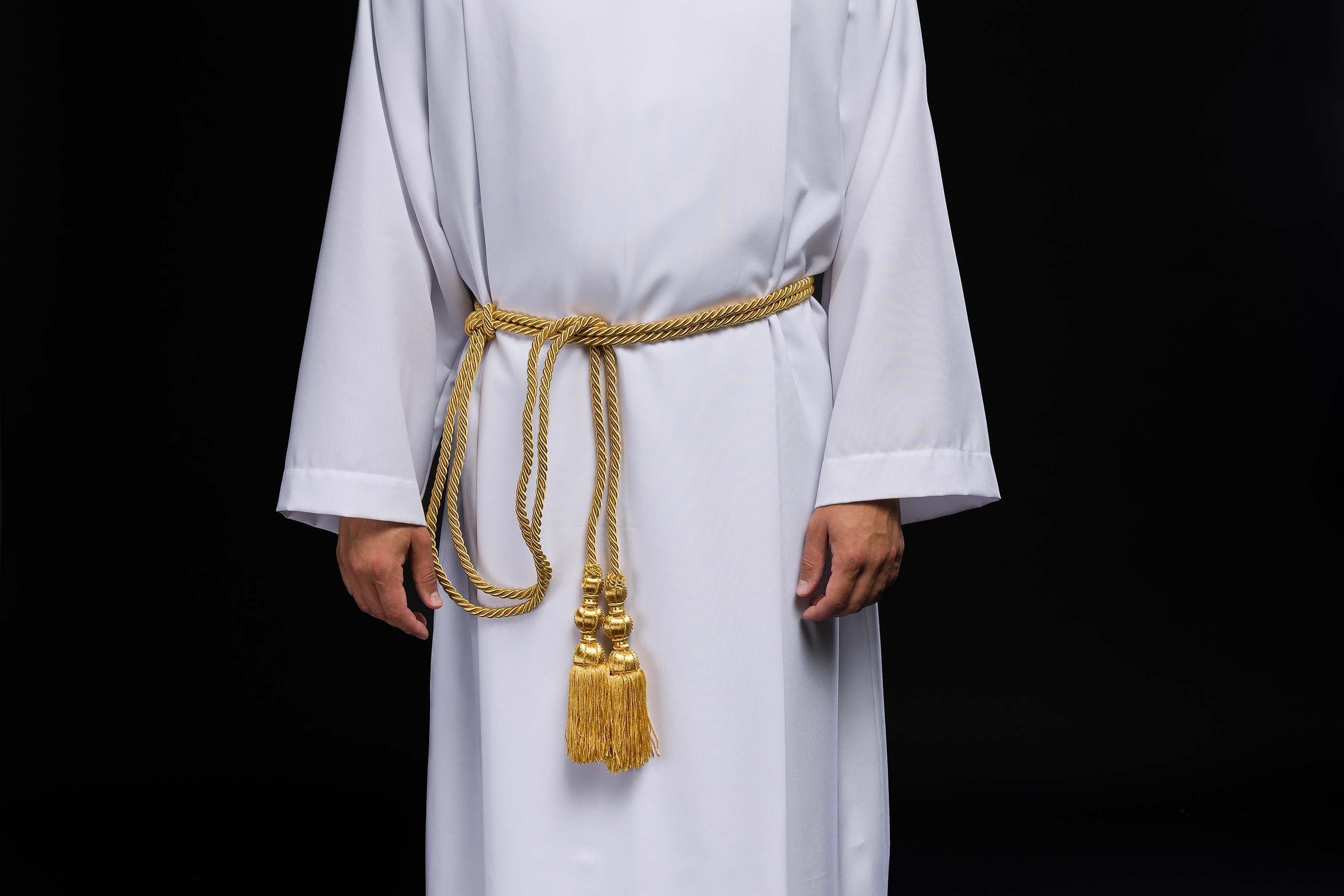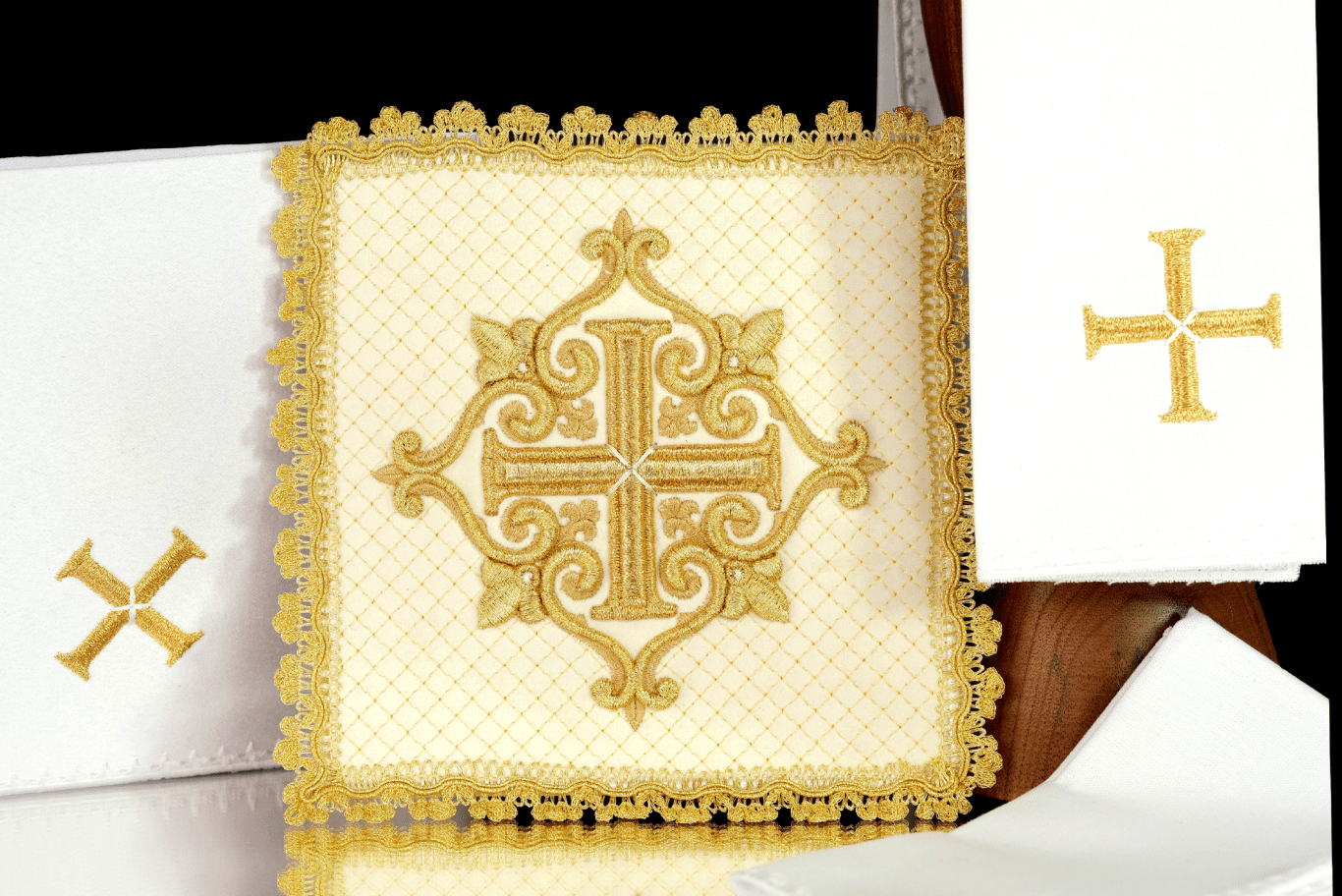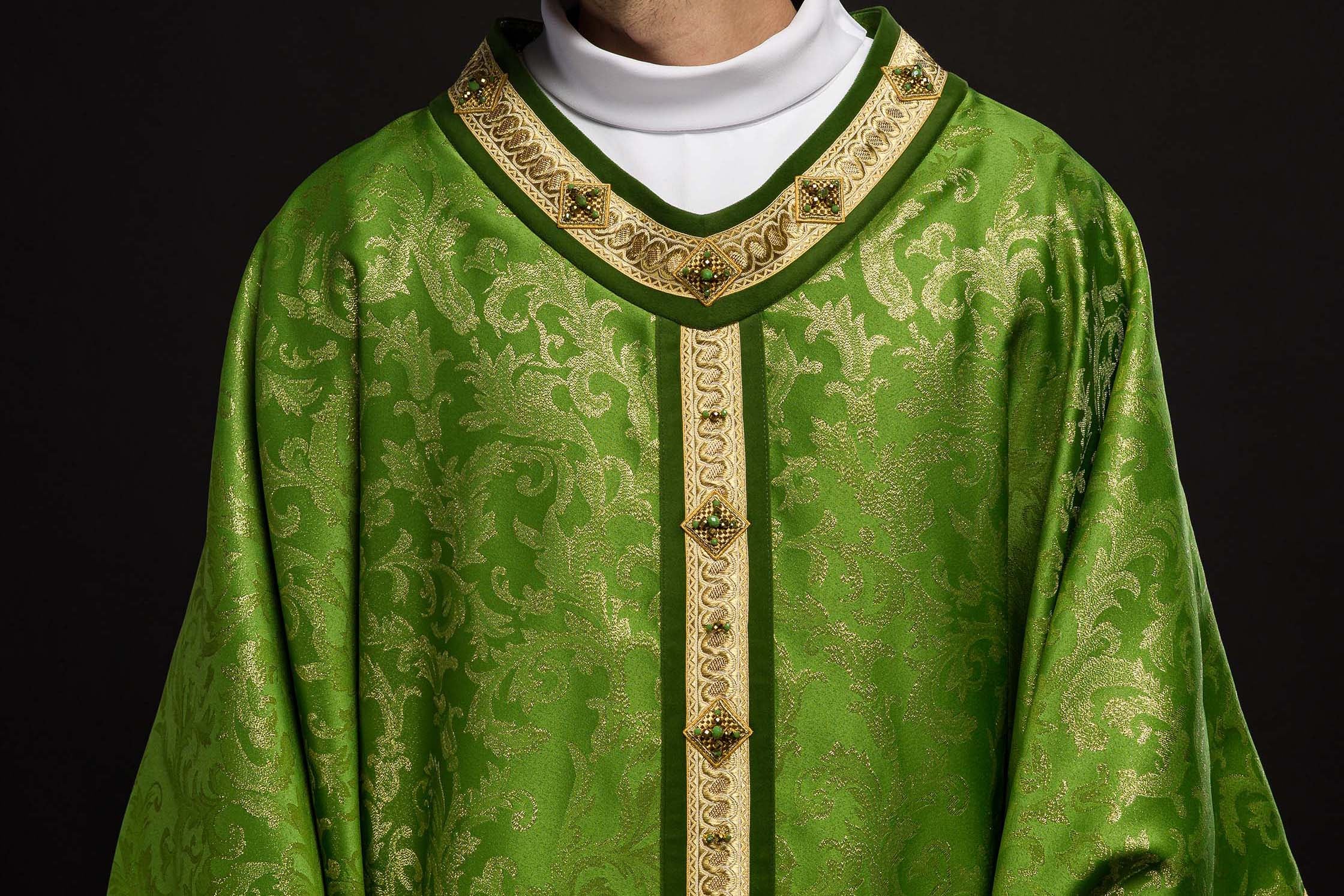
How to Plan Liturgy in 2025? A Liturgical Calendar with Key Dates for Every Priest
Liturgical Calendar 2025 – Key Dates for Priests
The liturgical year is the heart of the Church's life, a cycle that leads the faithful through the mysteries of salvation from the Incarnation to Pentecost. For a priest, who is the main dispenser of these mysteries, a perfect understanding of the liturgical calendar is an absolute foundation for fruitful ministry. The year 2025 brings with it a number of important dates that require appropriate preparation, from planning homilies, through the selection of appropriate liturgical vestments, to the organization of parish events. In this guide, we will look at the key moments of 2025 that every priest should be aware of in order to fully celebrate the liturgy and lead the community through the next stages of the church year.
Advent 2024/2025 – A Time of Waiting for the Nativity
The liturgical year begins in the Catholic Church on the first Sunday of Advent. In 2025, Advent will begin on Sunday, November 30, 2024, and end on Christmas Eve, December 24, 2025. It is a time of joyful anticipation of Christ's coming. During this time, priests often prepare special Rorate Masses for children, organize Advent retreats, and prepare sermons focusing on the themes of hope, conversion, and closeness to God. The dominant liturgical color during this period is purple, symbolizing penance, expectation, and conversion. It is worth taking care of appropriate liturgical vestments for this time, for example, chasubles in purple or with elements decorated with gold or silver threads, referring to the joyful nature of Advent, which is approaching Christmas.
Christmas 2025 – Celebrating the Incarnation
Christmas is one of the most important holidays in the Catholic Church, celebrated on December 25. In 2025, it falls on Thursday. Christmas Eve, December 24, although not a holy day of obligation, is very solemn. Masses during this period, especially the Midnight Mass, gather the largest number of faithful. Priests often prepare special messages emphasizing the miracle of the Incarnation and the message of peace. The liturgical color for Christmas is white (or gold), symbolizing the joy, purity, and glory of the Newborn King. HAFTINA TEXTILE GROUP offers a wide selection of Christmas chasubles, decorated with embroidery referring to the symbolism of this celebration, such as the Nativity scene, the Star of Bethlehem, or holy figures.
Christmas Time – From Christmas to the Baptism of the Lord
After the Solemnity of the Nativity, the Christmas Time follows, which lasts until the Solemnity of the Baptism of the Lord. In 2025, the Solemnity of the Baptism of the Lord falls on Sunday, January 12. It is a time still filled with joy at the birth of Jesus, and the liturgy emphasizes His divinity and mission. Other important holidays are also celebrated during this period, such as the Feast of the Holy Family (Sunday after Christmas) or the Day of Saint John Chrysostom (January 27). The dominant color is still white, symbolizing joy and glory.
Ordinary Time – From the Baptism of the Lord to Ash Wednesday
After the Christmas Time, the first Ordinary Time of the liturgical year follows, which lasts from the Solemnity of the Baptism of the Lord to Ash Wednesday. In 2025, Ash Wednesday falls on March 5. During this time, the liturgy focuses on the teachings of Jesus, His miracles, and the calling of disciples. The liturgical colors during this period are variable – depending on the day, they can be green (symbolizing hope and growth of faith), white (on feasts of the Lord or of the holy apostles and evangelists), or red (on feasts of martyrs). Priests often use this time for catechesis and formation of the faithful.
Lent 2025 – A Time of Penance and Conversion
Lent begins on Ash Wednesday, which in 2025 falls on March 5. It is a period of intense preparation for the Easter holidays, full of reflection, penance, and mortification. During this time, the faithful are encouraged to fast, give alms, and pray. The dominant color in the liturgy is purple. Priests often organize Stations of the Cross, Bitter Lamentations, and Lenten retreats. It is also a time when liturgical vestments in purple and black are of particular importance. HAFTINA TEXTILE GROUP offers a wide selection of veils, purificators, and liturgical vestments in these colors, with embroidery symbolizing the Passion of Christ, such as the crown of thorns or the cross.
Paschal Triduum – The Heart of the Liturgical Year
The Paschal Triduum is the most important period in the liturgical year, encompassing Holy Thursday, Good Friday, and the Easter Vigil. In 2025, it falls on the days from April 17 to 19.
Holy Thursday 2025 (April 17)
Holy Thursday commemorates the Last Supper, the institution of the Eucharist and the sacrament of priesthood. The Mass of the Lord's Supper, celebrated in the evening, is the culmination of this day. The liturgical color is white.
Good Friday 2025 (April 18)
Good Friday commemorates the Passion and Death of Jesus Christ on the cross. It is a day of fasting and abstinence from meat. The Good Friday liturgy is extremely solemn and simple – there is no adoration of the Blessed Sacrament, and Holy Communion is celebrated with Hosts consecrated on Holy Thursday. Liturgical color – red, symbolizing passion and love.
Easter Vigil 2025 (April 19)
The Easter Vigil, celebrated on Holy Saturday evening, is the central celebration of the entire liturgical year. It begins the celebration of the Lord's Resurrection. It consists of the liturgy of light (blessing of fire and the Paschal candle), the liturgy of the Word, the baptismal liturgy (blessing of water, baptisms, renewal of baptismal promises), and the Eucharistic liturgy. Liturgical color – white.
Easter 2025 – The Joy of the Resurrection
The Solemnity of the Resurrection of the Lord, or Easter, is celebrated on Sunday, April 20 in 2025. It is the peak moment of the liturgical year, full of joy and hope. The Easter period lasts for 50 days, until the Solemnity of Pentecost. During this time, the dominant color is still white. This is an excellent time to use richly decorated chasubles that emphasize the joy and triumph of Christ.
Easter Time – Continuing the Joy
The Easter Time, lasting from Easter Sunday to the Solemnity of Pentecost (June 8, 2025), is a time of continuing joy from the Resurrection. Other important holidays are also celebrated during this period, such as Good Shepherd Sunday (feast of vocations) or the Feast of Jesus Christ the Supreme and Eternal Priest. The liturgical color throughout this period is white. Priests can reach for the most beautiful liturgical vestments, symbolizing the victory of life over death.
Ordinary Time – The Second Part of the Year
After the Solemnity of Pentecost, the second Ordinary Time of the liturgical year begins, which lasts until the first Sunday of Advent (November 30, 2025). It is the longest period in the liturgical year, during which the liturgy focuses on shaping the life of the Church as a community of the Body of Christ. Liturgical colors are variable, with green being the dominant color. Numerous feasts of the Lord, Marian feasts, and feasts of saints fall during this period. Important dates include the Solemnity of the Most Holy Body and Blood of Christ (Corpus Christi) – in 2025 on Thursday, June 19, and commonly celebrated on Sunday, June 22. Corpus Christi celebrations are often associated with processions, and priests can use this opportunity to celebrate outdoors, requiring appropriate vestments and accessories.
Important Feasts and Solemnities in 2025 – Calendar
In addition to the mentioned periods, it is worth paying attention to specific dates that are of particular importance:
- January 1 (Wednesday): Solemnity of Mary, Mother of God
- January 6 (Monday): Solemnity of the Epiphany (Three Kings)
- February 2 (Sunday): Feast of the Presentation of the Lord (Candlemas)
- March 19 (Wednesday): Solemnity of Saint Joseph, Spouse of the Blessed Virgin Mary
- March 25 (Tuesday): Solemnity of the Annunciation
- April 17 (Holy Thursday): Mass of the Lord's Supper
- April 18 (Good Friday): Liturgy of the Lord's Passion
- April 19 (Holy Saturday): Easter Vigil
- April 20 (Sunday): Easter Sunday
- June 19 (Thursday): Solemnity of the Most Holy Body and Blood of Christ (Corpus Christi) – commonly celebrated on Sunday, June 22
- June 29 (Sunday): Solemnity of Saints Peter and Paul, Apostles
- August 15 (Friday): Solemnity of the Assumption of the Blessed Virgin Mary
- November 1 (Saturday): Solemnity of All Saints
- November 2 (Sunday): Commemoration of All the Faithful Departed
- November 23 (Sunday): Solemnity of Christ the King
- November 30 (Sunday): First Sunday of Advent – the beginning of the new liturgical year
How can HAFTINA TEXTILE GROUP support the priest in preparations?
Preparation for the liturgical year is not only planning the schedule of Masses and devotions, but also caring for the aesthetics and symbolism of the celebrations. HAFTINA TEXTILE GROUP SP. Z O. O. offers a wide range of the highest quality liturgical vestments and church accessories that will help priests emphasize the solemn character of each celebration. From elegant chasubles in traditional and modern designs, through richly embroidered stoles and dalmatics, to sets of chalice linens and altar cloths – each product is made with attention to detail and compliance with liturgical requirements. Regardless of whether you are looking for vestments for Advent, Christmas, Lent, or Easter, in our offer you will find solutions perfectly tailored to the needs of each parish and occasion. We offer the possibility of personalization, thanks to which you can create unique vestments, e.g., with the parish coat of arms or dedication.
Summary
The liturgical year 2025 offers a wealth of opportunities for deep experiencing of faith and celebrating the mysteries of salvation. Precise familiarization with the liturgical calendar and earlier planning are key for every priest. From the periods of Advent and Lent, through the solemnities of the Nativity and Resurrection of the Lord, to numerous feasts and memorials – each liturgical day has its meaning and requires appropriate preparation. HAFTINA TEXTILE GROUP SP. Z O. O. is a partner that can support you in this task, offering the highest quality liturgical vestments and accessories that will help give each celebration a unique character. We encourage you to familiarize yourself with our full offer at haftinausa.com, so that your ministry is even more beautiful and expressive.
```




